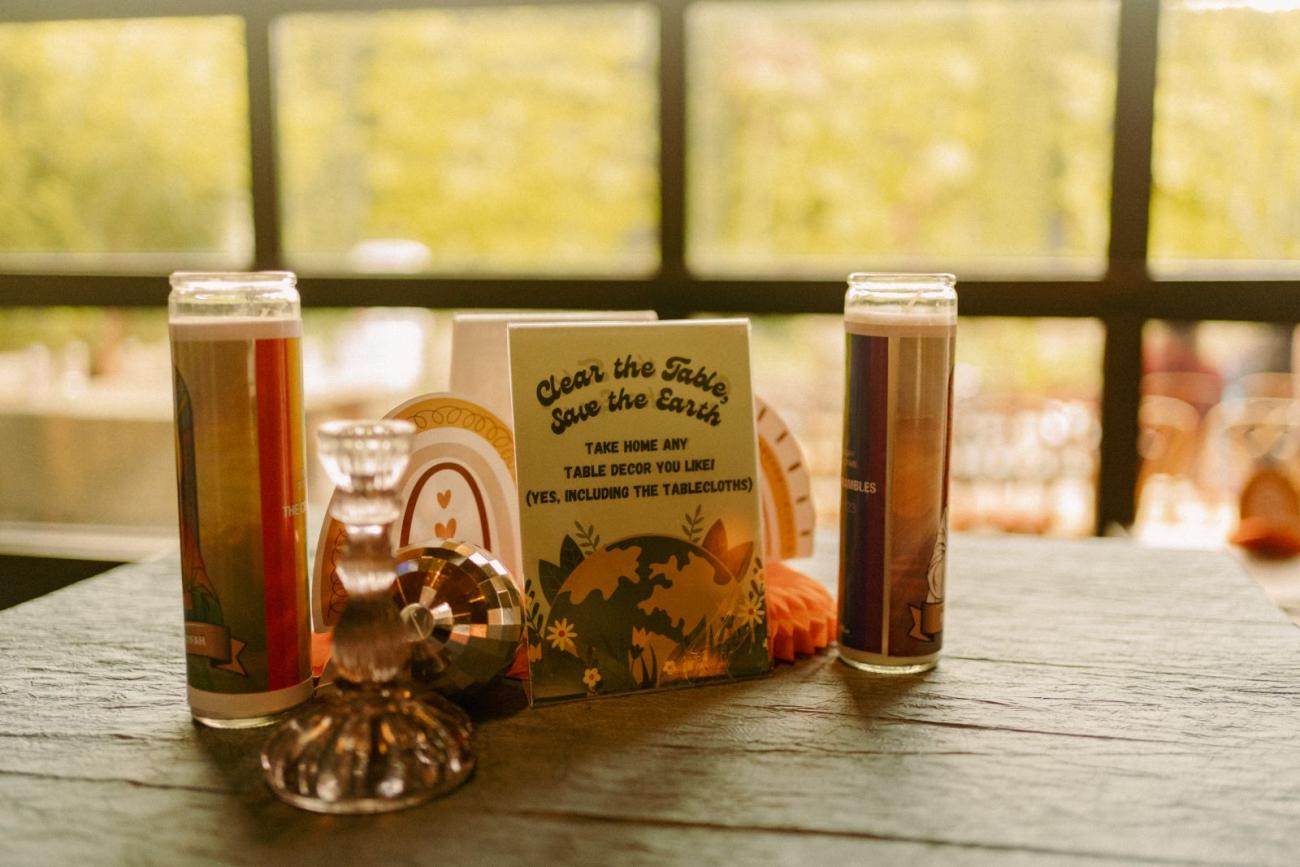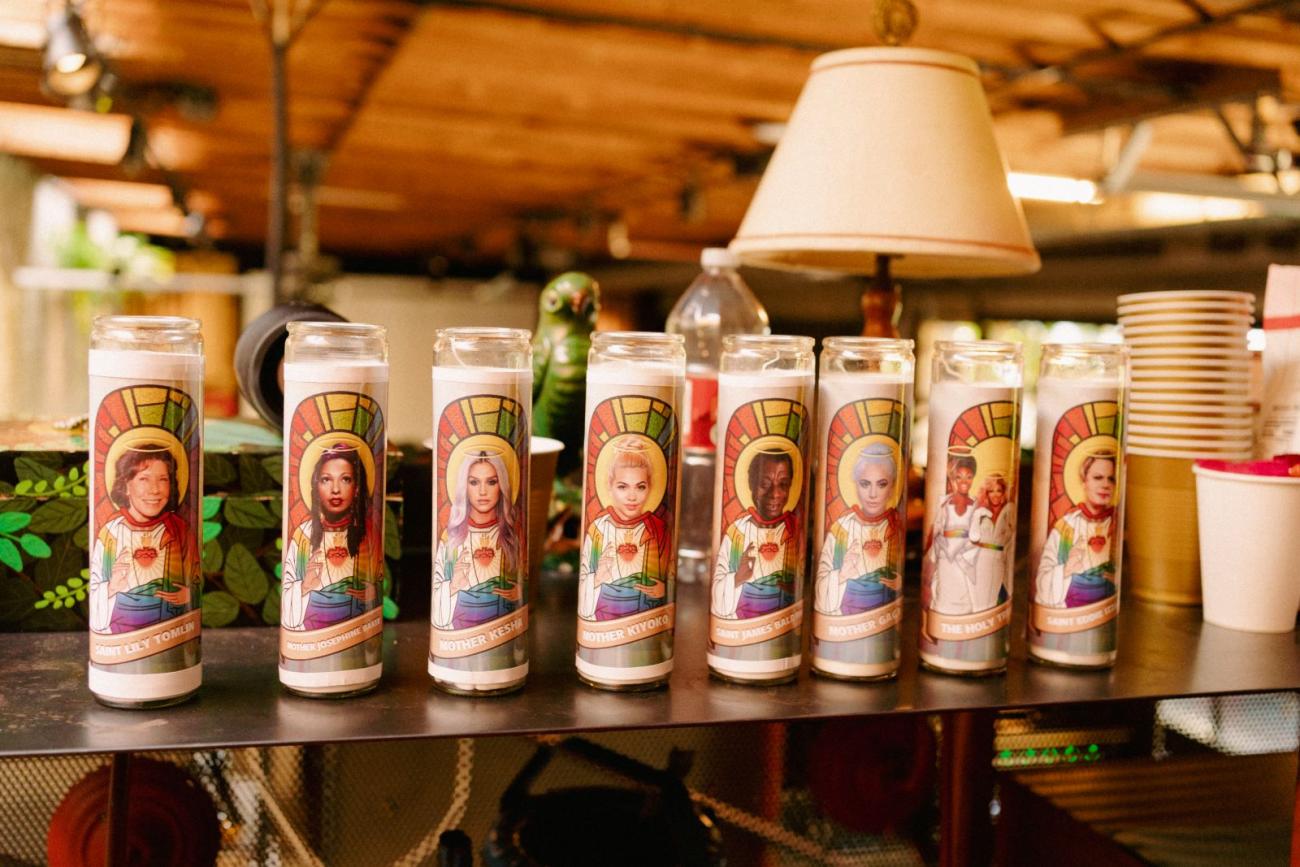
My now-wife and I booked our wedding venue in the fall of 2021. We had secured a perfect wedding date: February 3, 2023, aka 2/3/23, with the hopes for a crisp and sunny winter day in Los Angeles, California.
From the start, my wife and I wanted to prioritize sustainability at our wedding, because I knew the stats:
- The average carbon footprint of an American wedding is 56 tons
- The average wedding produces 400 pounds of waste
- There were 2.1 million weddings in the US in 2022 and 2.2 million in 2023
- Do the math with me. That’s 840 million pounds of waste and 117.6 tons of greenhouse gas (GHG) emissions in a single year, all because of weddings.
That couldn’t be our wedding. So, we doubled down, determined for our wedding to have as small a footprint as possible and this sustainable wedding guide shows how we did it.
Ditch the Flowers and Confetti
Though flowers are nearly synonymous with weddings, they’re not the most environmentally friendly choice.
Conventional flower arrangements pollute the planet through greenhouse gas emissions from transportation and refrigerants. In 2018 alone, the International Council on Clean Transportation found that flying imported roses into the US emitted 360,000 metric tons of CO2.
So instead of our wedding party walking down the aisle with flowers, or using flowers as decoration throughout the venue, we thrifted decor and ordered handmade, paraffin-free prayer candles with LGBTQ icons on them from a small business.
Our wedding party got to choose (and then keep!) a candle with which to walk down the aisle. The rest were positioned about the venue, eagerly awaiting new homes with our guests.
If you love florals at a wedding, don’t worry, you have options. You can harvest your own flowers from your garden or a friend’s, or find eco-friendly flower shops like New-York-based Good Old Days Florist, which prioritizes organic growing practices, US-made giftware, sustainable packaging, and other green practices. You can also donate florals to hospitals, assisted living facilities, and places of worship after.
We also wanted that celebratory moment after we said “I Do,” but rice, glitter, and confetti are difficult to clean up, potentially harmful to local wildlife, and often not biodegradable.
Our guests, instead, waved a variety of small pride flags from a small, queer-owned business. Another option is hole-punching fallen leaves or leaves from your herb garden for natural confetti.

décor, including raw fabric tablecloths, vintage tableware, and paraffin-free icon candles.
Reduce, Reuse, Recycle
Wanting our wedding to have the least amount of waste as possible, we began thinking about the refrain “reduce, reuse, recycle” during the planning stages—and for when the wedding was over.
As we did not use flowers to adorn the tables, we thrifted colored, kitschy, 70s-inspired tableware and encouraged our guests to take home whatever they wanted.
We made a sign and printed it on recycled paper, reading: “Clean the Table, Save the Earth—Take Home Any Decor You Like! (Yes, Including the Tablecloths)”
Yes, even the tablecloths were up for grabs! Knowing many of our guests are talented seamstresses, we dressed our tables in fabric scraps to then get a second life beyond February 3, 2023.
Speaking of clothing, we let our wedding party wear whatever they wanted within a broad 70s color palette, including outfits they already owned, to avoid yet another wedding party outfit sitting in a closet gathering dust.
Finally, our incredibly talented friend offered to make us signs for the wedding, from a welcome sign to advertising our tattoo artist and tarot reader during the reception. We thrifted old mirrors and wood signs, handed them off, and received beautiful, handmade gifts in return.
When the wedding was said and done, we ensured nothing ended up in the landfill. Our gifted signs live on, some hang in our home, the ones for our tattoo artist and tarot reader now live with them to promote their work.
Any decor pieces that went unclaimed we took home to keep in our own space, or we offered them in our local Buy Nothing group. To avoid figuring out what to do with things after the wedding or risking more waste in the landfill, you can also rent decor or outfits.
Compost the Food
Food waste is a huge problem in the United States and weddings represent a microcosm of that. According to the Sustainable Wedding Alliance, an average of 10% of all wedding food goes to waste, resulting in hundreds of pounds of food waste.
So, we decided to compost at our wedding.
We worked with the organization Compostable LA and they made it simple for us. Before our wedding began, members of Compostable LA swung by to drop off compost bins and help our catering staff learn what to compost and what not to. After the wedding, they came by again to pick up the compost, later telling us our wedding saved 77 pounds of food scraps from going to the landfill.
For our compostable dinnerware, we turned to Eco Party Time to supply our bagasse (dry, pulpy material from crushing sugarcane or sorghum) plates, utensils, napkins, and cups.
In general with our food, bartenders, and beyond, we stayed as local as possible to cut down on transportation emissions.

Consider the Venue
Living in LA, we had an abundance of venues to choose from. The one we ultimately chose not only boasted impeccable service and aesthetics, but also shared our sustainability priorities. Marvimon Productions’ SmogShoppe used to be a smog check station and now operates as a 100% solar-powered event space.
While every city won’t have an option quite like this, you can certainly prioritize venues that use renewable energy and other good practices or plant a tree and donate after your wedding.
Just because weddings are events steeped in tradition and have “always been done that way,” it doesn't mean it’s the right way for everyone. A wedding is personal, and should authentically represent who it’s celebrating.
Ensuring sustainability may require more planning, but that’s something you can discuss with a planner, if you’re not putting the details together yourself. And it’s worth the extra steps to make green weddings a new tradition.
I hope you use this guide as a starting point and let your green imagination run wild.







